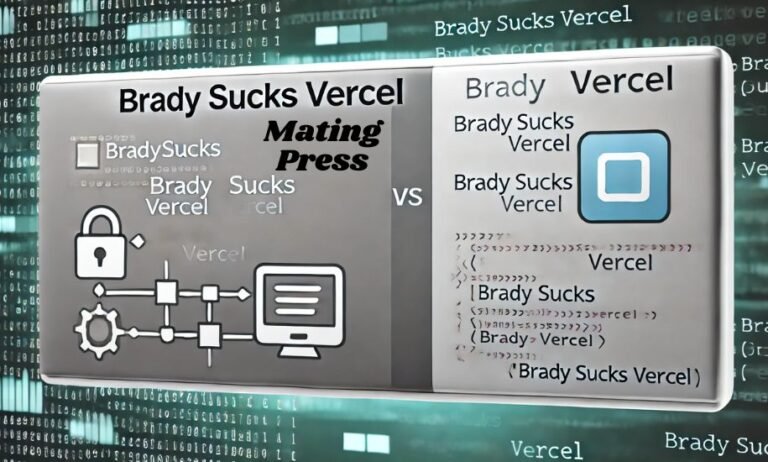We’ve all been there: you’re working away on your Windows PC when suddenly, a program freezes. You click and click, but nothing happens. It’s maddening! In moments like these, knowing how to force quit Windows programs can save your sanity and keep your productivity flowing. Whether it’s a stubborn game or an unresponsive application, having the right methods at hand is crucial for any computer user. Let’s dive into quick techniques that will help you regain control over your system and get back to what matters most—whether that’s work or play!
What is Force Quit and Why is it Necessary?
Force quitting is the process of closing an unresponsive program on your Windows computer. When applications freeze, they can cause frustration and hinder productivity. Knowing how to force quit can be a lifesaver in these moments.
When a program stops responding, it often consumes valuable system resources. This not only affects the frozen application but also slows down other processes on your PC. By force quitting, you free up those resources quickly.
Additionally, some tasks may require immediate termination due to potential data loss or security risks. For example, if software behaves unexpectedly during critical operations, it’s essential to shut it down swiftly.
Being equipped with quick methods to force quit programs ensures smoother navigation through your digital world. It empowers you to regain control without unnecessary delays or stress from technical hiccups.
Using Task Manager to Force Quit Programs
Task Manager is your go-to tool for managing unresponsive programs. It’s built into Windows and provides a straightforward way to force quit any application.
To access Task Manager, right-click the taskbar or press Ctrl + Shift + Esc. The interface opens up with a list of running applications.
Find the program that’s causing trouble. Click on it to highlight. Then, hit the “End Task” button at the bottom-right corner.
This action immediately closes the selected program without needing to restart your computer. You can also see resource usage, which helps identify if an app is hogging system resources.
Using Task Manager not only allows you to force quit but also gives insights into performance issues affecting your machine’s efficiency.
Keyboard Shortcuts for Force Quitting Programs
Keyboard shortcuts can be a lifesaver when programs become unresponsive. They allow you to quickly regain control without navigating through menus.
One of the most common shortcuts is “Alt + F4.” This combination immediately closes the active window. If that doesn’t work, try “Ctrl + Shift + Esc” to open Task Manager directly. It’s often faster than the usual method.
Another handy shortcut is “Ctrl + Alt + Delete.” This brings up a screen where you can select Task Manager and manage your applications from there.
Sometimes, using “force quit windows + X” followed by “T” opens the Task Manager too, providing quick access for force quitting troublesome programs.
Using these combinations not only saves time but also reduces frustration during those unexpected moments of computer lag or freezes.
Alternative Methods for Force Quitting Programs
Sometimes, Task Manager isn’t the only tool at your disposal for force quitting programs on Windows. Several alternative methods can help you regain control.
One option is using the Command Prompt. Open it with admin privileges and type `taskkill /IM program_name.exe`. Replace “program_name” with the actual name of the software causing issues. This method provides a quick way to terminate processes without navigating through menus.
Another approach involves creating a shortcut that directly kills stubborn applications. Right-click on your desktop, select “New,” then “Shortcut.” Enter `taskkill /F /IM program_name.exe` as the location, give it a name, and click finish. Now you have one-click access to close that pesky app!
For those who prefer third-party solutions, consider tools like Process Explorer or CloseApp. These applications provide additional features beyond what Windows offers, giving you more flexibility in managing unresponsive programs.
Common Errors and Issues with Force Quitting on Windows
Force quitting programs on Windows can sometimes lead to unexpected errors. One common issue is data loss. If you terminate a program without saving, you risk losing unsaved work.
Another problem might be system instability. Force quitting can leave some processes hanging, which may cause your computer to slow down or behave erratically.
You could also encounter application crashes after force quitting. Some applications don’t handle sudden terminations well and may fail to restart properly.
Moreover, frequent force quits can create registry issues over time. This leads to increased error messages and software conflicts that make troubleshooting difficult.
Users often face frustration when tasks don’t appear in the Task Manager despite being active in the background. This oversight can complicate the process of managing unresponsive programs effectively.
Tips for Preventing the Need to Force Quit Programs
To minimize the need to force quit programs, regular maintenance is key. Keep your software up to date. Developers frequently release patches that enhance stability and performance.
Monitor system resources regularly. Too many applications running simultaneously can strain your computer’s memory and processor. Close unnecessary tabs or programs before starting new ones.
Utilize lightweight alternatives when possible. Some applications are resource-heavy; switching to lighter versions can help maintain smooth operation without overloading your system.
Consider using a reliable antivirus program as well. Malware can drastically slow down performance and lead to unresponsive software.
Set aside time for periodic reboots of your machine. Restarting helps clear temporary files and refreshes system processes, promoting better overall performance while reducing glitches that may require force quitting later on.
Why You May Need to Force Quit a Program
Sometimes, programs just don’t cooperate. They freeze or become unresponsive, leaving you stuck and frustrated. In these moments, knowing how to force quit can save your day.
You might be running resource-heavy applications that crash due to insufficient system memory. When this happens, the program may hang indefinitely.
Other times, a software glitch could cause an app to misbehave. This can lead to endless loading screens or error messages that disrupt your workflow.
Malware infections can also trigger unexpected behavior in programs. If something seems off with an application’s performance, it might be time for a force quit.
Updates or installations can occasionally go awry. An interrupted process may require immediate termination before further complications arise. Understanding when and why to take action is essential for smooth computing experiences.
The Traditional Method of Using Task Manager
When it comes to force quitting programs on Windows, the Task Manager is your go-to tool. It’s straightforward and powerful, making it a favorite among users.
To access it, right-click on the taskbar or press Ctrl + Shift + Esc. This opens up a window that displays all running applications and processes.
Once you’ve located the unresponsive program, click on it. A simple right-click will reveal an option to “End Task.” Selecting this will close the application immediately.
The interface also shows resource usage, helping you identify which programs might be slowing down your system. With just a few clicks, you can regain control without rebooting your computer.
Keep in mind that while this method is effective, it’s essential to save work frequently to avoid losing any important data when apps hang unexpectedly.
Tips for Preventing the Need to Force Quit Programs
To minimize the need to force quit programs, start by keeping your software updated. Developers often release patches that improve performance and stability.
Next, monitor your system’s resource usage. Use the Task Manager to check for apps consuming excessive CPU or memory. If a program frequently misbehaves, consider alternatives.
Regularly clear out unnecessary files and applications from your device. A cluttered hard drive can slow down performance and lead to unresponsive programs.
Also, avoid running too many applications simultaneously. Limit multitasking when possible to reduce strain on your system’s resources.
Consider investing in more RAM if you find frequent slowdowns during regular tasks. Increasing your computer’s memory can enhance overall performance significantly while reducing crashes and freezes.
Conclusion and Final Thoughts
Force quitting programs on Windows can seem daunting, but with the right methods at your disposal, it becomes a straightforward task. Understanding what force quit means and why it’s necessary helps you grasp its importance in maintaining system performance.
Utilizing tools like Task Manager offers a reliable way to close unresponsive applications. Keyboard shortcuts provide quick solutions for those moments when time is of the essence. Exploring alternative methods gives you additional options if traditional routes fail.
However, encountering common errors while attempting to force quit is part of the experience. Knowing how to navigate these issues equips you better for future encounters. Moreover, taking proactive steps can significantly reduce instances where forced termination becomes essential.
Being aware of why certain programs may hang or freeze enables you to prevent such situations from occurring altogether. With practice and familiarity with these techniques, you’ll find yourself adept at managing unresponsive applications swiftly.
Embracing these strategies not only keeps your workflow smooth but also enhances your understanding of Windows operations as a whole. By staying informed and prepared, you’ll ensure that even the most stubborn software won’t disrupt your productivity for long.







